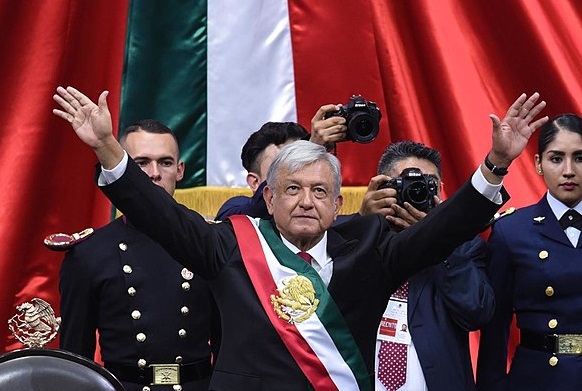The first 100 days of Andrés Manuel López Obrador's government have passed. Although this is a relatively short space of time, it is enough to know the fundamental features of his administration. This article was originally published in Spanish on the Mexican website of the IMT, La Izquierda Socialista.
Power, state and government
In a capitalist regime, the real power resides with the big capitalists: they are the ones who decide what happens and how. The 16 richest men in Mexico have around 150 billion dollars between them: equivalent to a little over 60 percent of the state budget for this year. One percent of the population owns almost half of the national wealth. They control the economy, but they are not a democratic body: nobody votes for them and they have their positions because they were born rich or have become so by wheeling and dealing in the course of their lives.
The super-rich make the decisions, but to exercise their dominance requires a legal-political structure, which is obscured by rules that formally permit anyone to govern, while in actuality preserving the present state of affairs to ensure that the capitalists can continue to augment their wealth. This legal, political and repressive structure is the state.
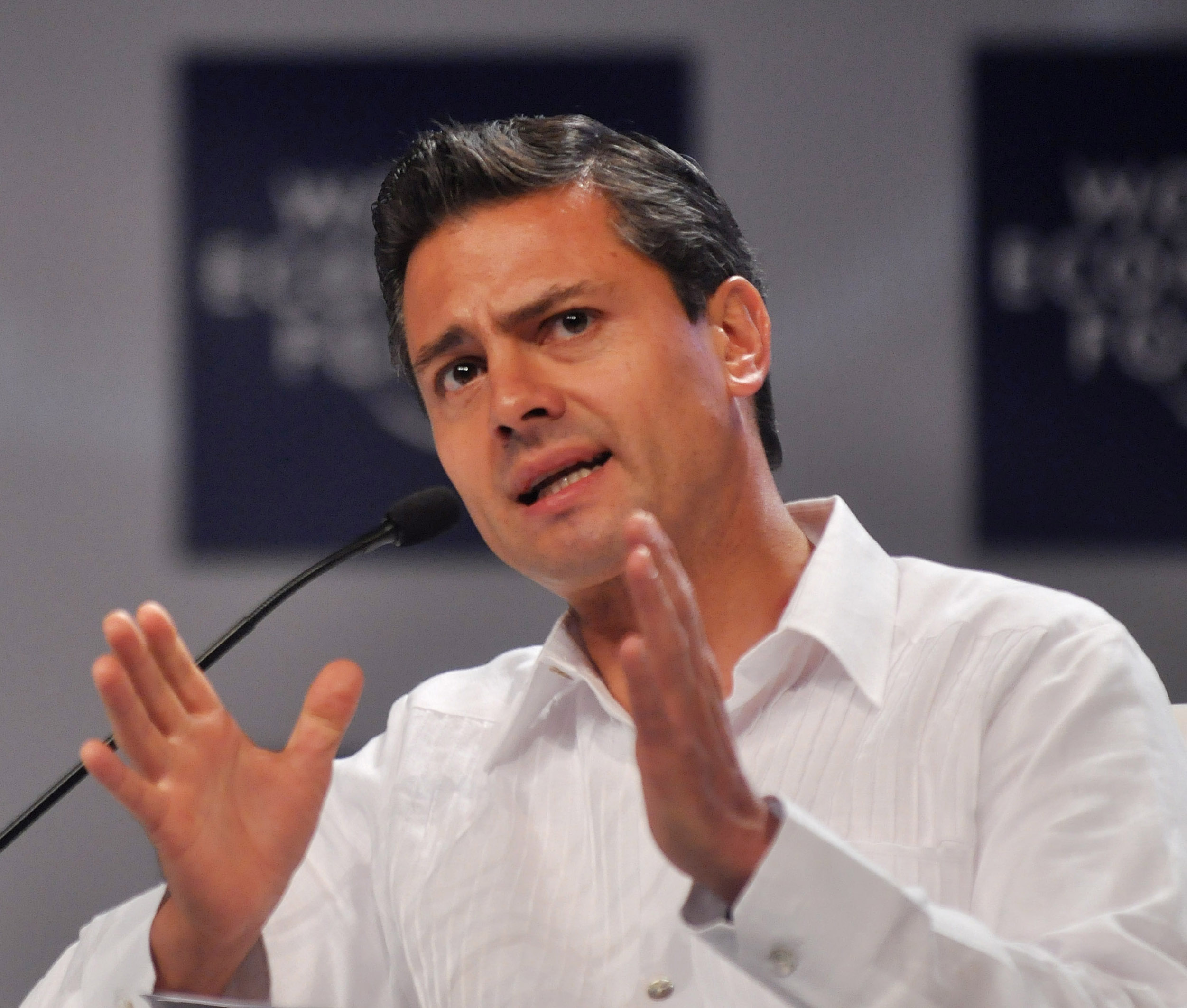 The process of depredation of the bourgeoisie was done at the expense of destroying the legitimacy of the state / Image: World Economic Forum
The process of depredation of the bourgeoisie was done at the expense of destroying the legitimacy of the state / Image: World Economic Forum
The Mexican state defends capitalism: it can assume repressive or democratic forms, depending on the degree of consensus that exists in society, but will never itself seek to modify existing relations of power.
One aspect of the rules of the state is the renewal of its governing bodies: the executive and legislative branches. Formally, anyone can apply to occupy these organs, but in reality they are filled from the ranks of the elite.
When a revolution takes place, the masses demand participation in the state, overthrow governments and reconstruct laws in their image, but as long as economic relations are not changed (and unless a new state with a proletarian class character is built) the oligarchy will always end up assimilating the new ruling caste. This was what happened with the PRI (Institutional Revolutionary Party), which eventually ended up as a traditional right-wing party.
In Mexico, the assimilation of the government by the bourgeoisie gathered pace after Miguel Alemán's administration, but it was in the government of Carlos Salinas when it reached a peak. Since then, in its eagerness to enrich itself as quickly as possible, the bourgeoisie transferred the equivalent of a quarter of the GDP to the current gang of fat cats. This is a different process, but, in essence, very similar to what happened with the Porfirio Díaz dictatorship.
The process of depredation of the bourgeoisie was done at the expense of destroying the legitimacy of the state. During the administration of Calderón, following rampant fraud and wastefulness, the state had no power in either the territories or the economic sphere. In this situation, criminal groups in all spheres assumed control. Crony capitalism replaced the rules of state control with mafia rule.
1 December 2018: the masses step forward
The working masses, instinctively defending themselves over the course of a historical phase lasting more than 30 years, have led a ceaseless battle against the bourgeoisie, which reached a high point on 1 December 2018.
A rare event took place: someone who was not part of the bourgeois elite entered the government with 30 million votes behind him. This was a real cataclysm for the system, since the people opted for an alternative to the policies of so-called neoliberalism.
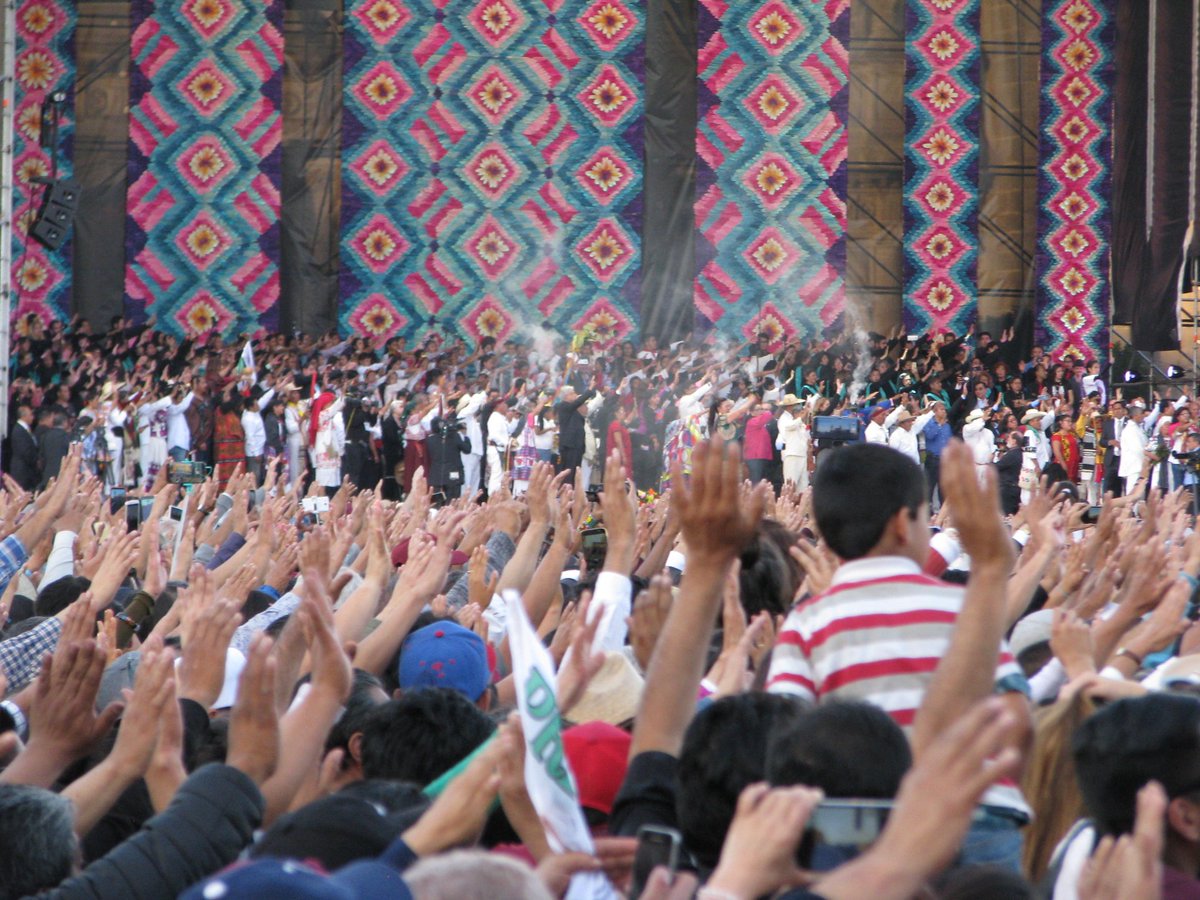 The working masses have led a ceaseless battle against the bourgeoisie for 30 years, which reached a high point on 1 December 2018 with AMLO's election / Image: Twitter, Jeremias RA
The working masses have led a ceaseless battle against the bourgeoisie for 30 years, which reached a high point on 1 December 2018 with AMLO's election / Image: Twitter, Jeremias RA
Andrés Manuel López Obrador (AMLO) dominated the last elections. His party has a majority in both the Chamber of Representatives and the Senate, so he doesn’t need to give in to the blackmail of the parties of the old regime.
The movement was such that, even today, the masses do not miss the opportunity to show their repudiation of the PRI or the PAN (National Action Party) by booing them in AMLO’s presence.
End of the media monopoly
Even the traditional media has been overwhelmed by social networks. For example, one mainstream news programme’s YouTube channel has 900,000 subscribers. The 10 channels run by AMLO supporters with the same number of subscribers exceed 100,000 daily views, while the aforementioned mainstream news channel fails to hit 2,000 or 3,000.
The control of big television and radio stations over the spread of information has been broken. At this point, the productive forces have flooded the relations of production. But this is only one aspect of the new situation.
The battle for a new trade unionism
The masses’ desire for change is expressed in all fields. An example of this is in the trade union movement. A battle broke out on the northern border, especially in Matamoros, in response to AMLO's announcement of an increased minimum wage. The masses quickly overtook the traditional unions and strikes broke out, some legal and others not, and won important victories in most cases, such as 20 percent wage increases. Comparable victories were unheard of for 30 years - with the exception of the workers of the mining union, whom given their strategic position and combativeness have achieved similar increases in the past, despite the wrecking role of their leadership.
It is necessary to clarify that the triumph of the workers of Matamoros is a product of the current atmosphere of class struggle. It is an example of proletarian militancy: a victory exclusively for the workers, given that the AMLO government itself would have preferred to avoid the struggle in order to get along with the businessmen.
Now the workers face repression from the bosses in the form of dismissals, but the proletariat on the border is not intimidated - it is pushing for more. Now that the AMLO government says that there must be union democracy, a struggle will be unleashed to build unions to replace the fragments of CTM (Confederation of Mexican Workers) and the like. This will be done with or without the consent of the government. The process has only just begun over these last 100 days, and will tend towards generalisation at the national level.
Regional struggles
With regard to other social sectors, it is important to emphasise the masses’ feelings of confidence. In fact, their greatest advantage, for the moment, is that they are not subject to the will of the new government. For example, there is a plan to build a thermoelectric plant in the state of Morelos, against the will of the inhabitants, and they continue to struggle against its construction.
Similar events have occurred around projects such as the gold mine in Baja California, which had to be cancelled due to the clamor of the masses; and we will probably see struggles against projects in the Isthmus of Tehuantepec and the Mayan train. In all these cases, the way forward is through class struggle: working-class organisation and independent mobilisation. Government proposals will have to confront the will of the masses in all the towns and regions of Mexico.
Women's rights
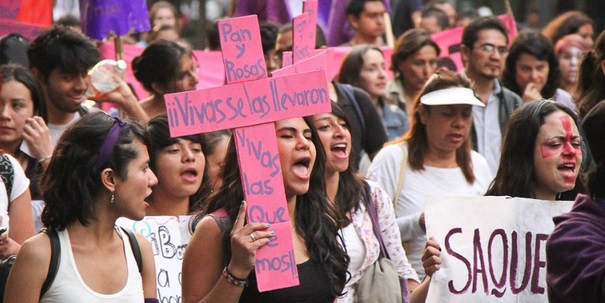 The battle against women's oppression cannot be left for an indeterminate future, it must be fought now / Image: Peace News
The battle against women's oppression cannot be left for an indeterminate future, it must be fought now / Image: Peace News
A similar militancy can be seen in women’s struggles. It is clear that there will be not government initiative to apply the right to abortion nationwide, which is currently provided by health services in Mexico City, for example. A mass campaign will be necessary to see that this is carried through, especially in the more backward regions such as Guanajuato and Nuevo León.
The same goes for the fight against femicide, and for the true equality of women. On these issues, the impetus must come from below, and the fight must be both systematic and systemic. It is not a question of government policy alone, but of a society poisoned by capitalism, from which racism, sexism and violence against the oppressed inexorably arise. These battles cannot be left for an indeterminate future, they must be fought now, given that lives are currently being lost. We must not lose sight of the fact that capitalist society will revive all the scourges of oppression and barbarism while it continues to exist.
In short, the masses plan to take their destiny into their own hands. If AMLO is a partner in this, all the better, but they'll fight with or without him.
The National Guard
Violent crime is another symptom of the capitalist crisis. The president’s response has been to create a new military force, which will have 80,000 members. The initiative is viewed with sympathy by the majority of the population, given that it sounds like action rather than the empty words and window dressing of previous governments.
Of course, the reaction of large sectors of the masses that felt abandoned to rampant violence is very natural. It is likely that, in the long run, we will see some effect in terms of more criminals being arrested, but the main matter of concern is the creation of a body of armed men who, being isolated from the masses, can be used against them by this or future governments. It could also be used against AMLO himself. Marx pointed out, the French National Assembly at the time of Louis Bonaparte was dissolved at the hands of the armed forces it had created. Both the PRI and the PAN finally gave their approval to this new body, perhaps thinking: "who knows, maybe we will have to use this national guard to crush López Obrador?"
The alternative is not to sing songs of peace and love to the criminals, but rather, the armament of the people in the form of local militias, elected in popular assemblies and placed under their oversight, with the power of revocability. This could be an armed force, not of 80,000, but of 2 or 3 million: an authentic people-in-arms.
How to fight against neoliberalism?
There is no doubt that AMLO is genuinely a well-intentioned person. He has repeatedly pointed out that it is necessary to overcome neoliberalism, which he identifies with corruption and the use of government positions for personal enrichment. That is, he acknowledges the relationship between economic power and political power. Instead of using the state to strengthen the oligarchy, AMLO intends is to use the state to distribute the wealth for the benefit of the poorest, with state support ranging from 800- 6,000 pesos, depending on the individual case. Of course, there is no one who opposes increasing the income of the poor - except the oligarchs, who consider it a mortal sin to waste money by "giving it away" to the poor. They would prefer the continue the tradition of "giving it away" to the rich.
To put it in other words, AMLO aims to move from a government centred on the rich to one focused on the poor. State support for 8 million seniors and 10 million high school students is just one example. To finance this social investment, he intends to combat another feature of neoliberalism: corruption.
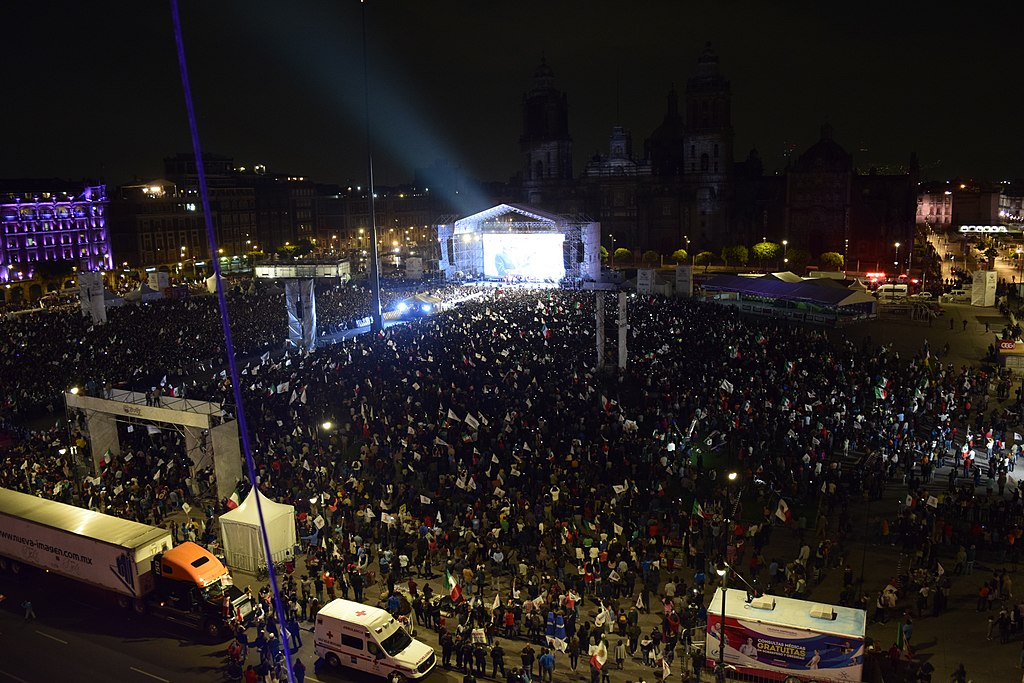 There is no doubt that AMLO is genuinely a well-intentioned person, but his programme to create a government for the poor cannot succeed on a capitalist basis / Image: Salvador alc
There is no doubt that AMLO is genuinely a well-intentioned person, but his programme to create a government for the poor cannot succeed on a capitalist basis / Image: Salvador alc
When it comes to any economic problem, there seems to be only one response from the new government: "fight corruption." Of course, there is a lot of sense in this. Let us suppose that the fight against corruption is successful, that "we all behave ourselves" and we achieve savings and a budget of 500 billion pesos annually to distribute to the poor. This would be an increase of 60 million, enough provide about 8,400 pesos a year each, per person. This is better than nothing, but hardly comparable to a job with an annual salary of 144,000 pesos, which is necessary to pay for the basics.
In summary, even if the programmes of the new government are successful, they would still be inadequate to actually reduce poverty. These policies mark a huge change from the governments of the PRI and the PAN, but are not enough to eradicate poverty.
Nevertheless, the masses’ optimism is reflected in the Consumer Confidence Indicator (CCI), which reached 48.81: the highest level in all history, to the bafflement of the bourgeois “experts” (El Sol de México 6/03/19). There are reasons for the masses to be optimistic, including the fact that inflation (3.9 annually) is at one of the lowest levels in five years. To top it off, the dollar currently averages 19 pesos, while 100 days ago it exceeded 20 pesos.
International turbulence
Of course, these circumstances are due to external factors, such as the fact that Donald Trump is dedicated to destroying trade agreements with the whole world: Russia, Turkey, India, the EU, but especially with China, with whom he is carrying out a genuine trade war. This has led the Trump administration to exert relatively little pressure on Mexico, which, in the short term, creates a relatively advantageous scenario for Mexican foreign trade, which still has a valid treaty with the States.
The world economy is heading towards the collapse of the dollar, although this process may still take some time, and while this is happening, the Mexican economy survives by treading water in the face of international turbulence. However, when the international crisis erupts, there will be no shield to protect us.
The shackle of debt
Neither has the printing of money, nor further debt been resorted to. The latter has angered US banks, which, like vampires, live by sucking the blood of entire countries through interest on unpayable loans. Enrique Peña Nieto was a hero to the US banks, since he took total indebtedness, internal and external, from 30 percent of GDP to 50 percent today, allowing the bankers to earn billions. Pemex alone (the privatised state oil company) took on debt worth almost 100 billion dollars. This was so painful that AMLO says there will be no further loans. Even so, the Mexican debt does not compare, for example, with US debt which is 104 percent of GDP; nor countries such as Germany, with 70 percent of GDP, Italy with 135 percent, or China with over 200 percent.
As we have said on other occasions, debt is one of the mechanisms that the bourgeoisie uses to drain the wealth of workers without creating a penny of value. Setting limits is a good thing, as is avoiding a deficit and rejecting the idea that state expenditures can be reduced without implying a reduction in social spending. However, even with these measures, the real power structures in Mexico have not changed.
Investment and development
López Obrador is right when he says that neoliberalism results in corruption, but this is not the essence of it. If we look at the economic structure of the country in 1982 and compare it with that of 2018, we find the basis of this economic model, and understand how to break it.
In Mexico, the total investment in 1981 was around 30 percent of GDP. Almost 11 percent of it was public (Cuamatzin, 2006); for 2017, it was 22 percent, of which 19 percent was private and 3 percent government. In other words, "neoliberalism" has meant a relative reduction of 8 percent of GDP of public investment, without the private capitalists investing more. In fact, the opposite is true. The bourgeoisie was not able to develop the economy, and the state almost collapsed.
Until this situation is reversed, we will have a government that criticises neoliberalism, while actually administering it. The only way to start combating this would be expropriating the rich and putting the biggest companies, banks and financial organisations under the democratic control of the workers. Some will say that the capitalists are allied internationally and we would no longer receive any loans. We say that, in fact, we could ignore the government debt, declare it illegitimate - in short, not pay it. Then we would have resources for development, and neoliberalism would end. Surely, workers in the States (given their own situation) would sympathise with ignoring the national debt. Some would say that refusing to pay would require a revolution in the United States. We say: "well yes, that’s the idea!" The fourth transformation must know no boundaries.
Pension schemes
In practically all sectors of the economy, similar conditions are evident. The last 30 years of counter-reforms have generated a scheme of capitalist reproduction that feeds itself at the cost of the misery of the masses. It must be destroyed, or else the government will end up as an agent of this scheme.
Let's take an example. Pensions were privatised between 1997 (IMSS- Social Security) and 2007 (ISSSTE- Social Security and Services for State Workers). This means that pensions are not guaranteed. On retiring, workers will receive what they manage to save. Pension fund managers, meanwhile, embezzle the money and earn commissions, whether the funds go up or down - barefaced robbery. The proposal by the AMLO administration is not to renationalise pensions, but to expand their investment faculties, while leaving them privately owned. In the long run, this will become a source of social conflicts of monstrous proportions. At the moment, these problems have not risen to the surface, given that it will be until the middle of the next decade when workers retire, to realise they have nothing. At this point it is not enough fight corruption, we must renationalise the funds, and build a state administration as a source of productive investment with guaranteed pensions. This is how to genuinely overthrow "neoliberalism".
Not one step backwards!
AMLO emphasises that it is important to arrive at social harmony as a mechanism for the fourth transformation to be consolidated. We consider social harmony to be an end, not a means. When exploitation and violence ends, then there will be room for harmony. Meanwhile, you cannot appeal to the patience of the people. The most positive thing about the current situation is that it creates space to free up the class struggle against the exploiting classes.
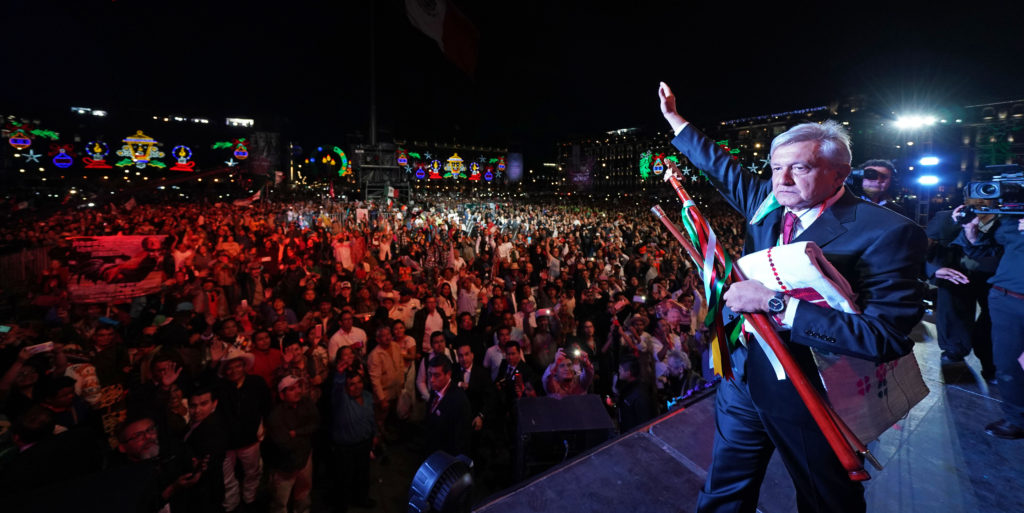 The first 100 days of the AMLO government have shown that the real conflicts are only just emerging / Image: fair use
The first 100 days of the AMLO government have shown that the real conflicts are only just emerging / Image: fair use
Morena (AMLO's party) is not an organ of social control like the PRI was: it has neither the mechanisms nor the strength to subdue a single directive of the trade union, peasant or even youth movement. This is an opportunity that must be taken advantage of in order not to place limits on the struggles throughout Mexican society.
The main enemies are the bourgeoisie and imperialism: as long as the masses take the initiative it will be possible to advance the demands of the people, and these first 100 days of the AMLO government have shown that the real conflicts are only just emerging.

